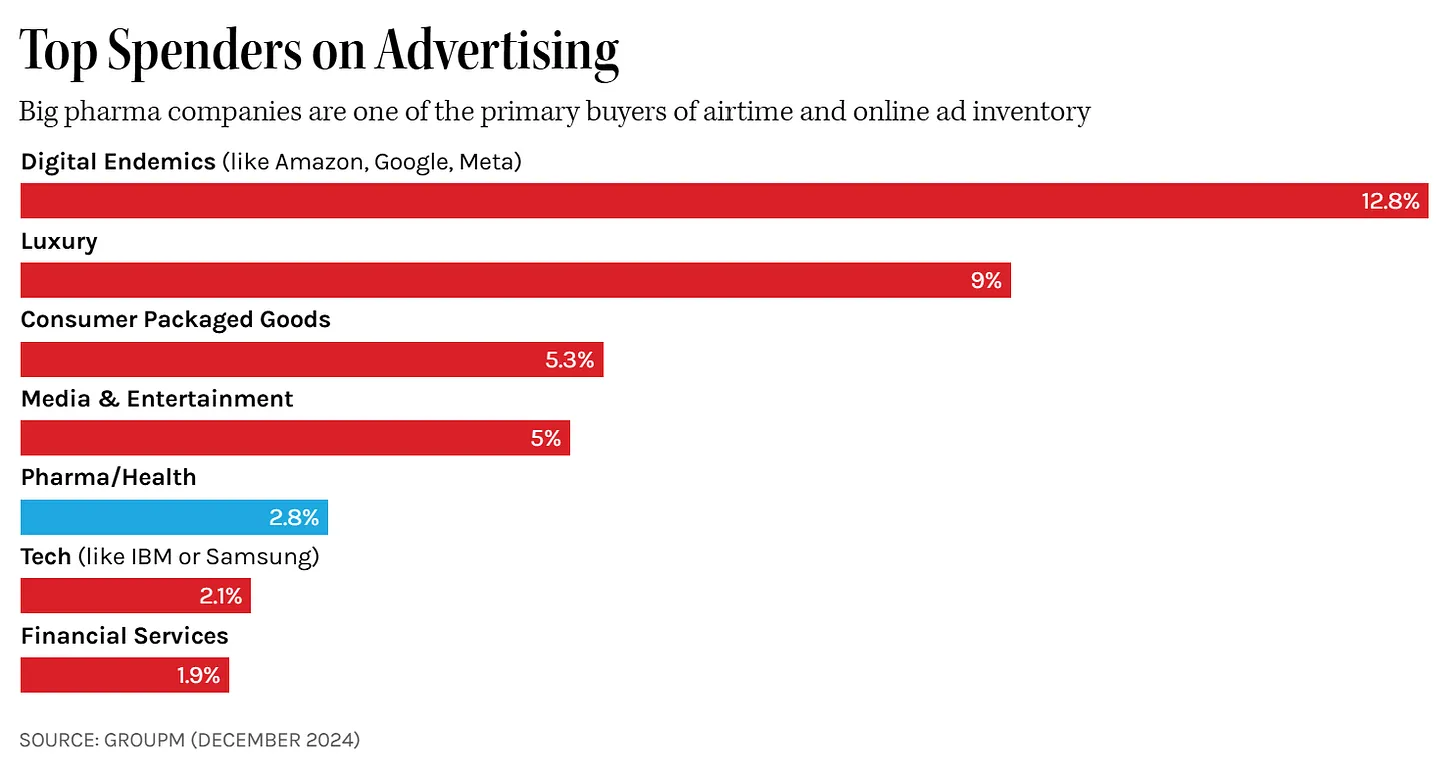Let’s start with the obvious: TV drug ads aren’t designed to inform—they’re designed to manipulate. The formula is always the same. Cue soft lighting and sappy piano music. A sad, listless person pops a pill and suddenly life is vibrant again. They’re running through fields, laughing with family, walking dogs across idyllic bridges.
Then, in a breathless voiceover, the side effects come tumbling out like a legal disclaimer roulette wheel—stroke, heart failure, suicidal thoughts. The goal? Make viewers want a drug before they even talk to their doctor. It’s emotional coercion dressed up as health education.
This completely inverts how medicine is supposed to work. Health care decisions should be made inside the exam room, not in a 60-second marketing spot. Patients should go to their doctors with symptoms, and those doctors—armed with clinical training and knowledge of the patient’s full health profile—should decide whether a drug is even necessary.
Many issues could be better addressed through lifestyle changes, diet, supplements, or preventative care. But instead, America has normalized a pill-for-everything culture, supercharged by the fact that doctors are often nudged by patients demanding whatever drug they saw advertised last night during a commercial break.
This isn’t just bad medicine—it’s dangerous. And it’s no accident.
Big Pharma isn’t spending billions on advertising because it cares about your health. It’s doing it because the return on investment is enormous. Studies estimate the ROI on direct-to-consumer (DTC) drug ads ranges from 100% to 500%, depending on the drug. In 2025 alone, pharmaceutical companies are projected to spend over $5 billion on national linear TV ads, according to iSpot.tv. That number balloons even higher when you include digital and streaming. Just a handful of blockbuster drugs—like Skyrizi, Jardiance, and Ozempic—are burning through tens of millions in TV ads every month.
This revenue isn’t just padding Big Pharma’s pockets—it’s quietly buying influence in the media. Nearly 31% of ad minutes on major nightly news broadcasts in 2024 came from pharmaceutical brands. That means a huge portion of media budgets depend on the very companies they should be holding accountable. And surprise, surprise: when Big Pharma misleads the public, many news outlets are either silent or hesitant to report critically. The financial conflict of interest is baked in.
We saw the worst-case version of this during the COVID-19 pandemic. The novel mRNA shots—rushed to market under emergency use—were sold to the public as miracle solutions. Government officials and media outlets claimed these vaccines would “stop infection,” “prevent death entirely,” and “end the pandemic.” Younger, healthy individuals were told they needed them for everyone’s safety, despite already low statistical risk. None of these claims held up. As the data evolved, we learned the vaccines offered some reduction in severe disease, but not sterilizing immunity. Yet the media rarely corrected course.
Why would they? Pharma ads were paying the bills. Meanwhile, federal workers were mandated—and many private sector employees coerced—into getting injections under false pretenses. Billions of dollars flowed to Big Pharma. The American public was misled.
This pattern of deception is not new. Pfizer alone has paid billions in legal penalties over the years for unethical marketing, off-label promotion, and other violations. The most infamous: a $2.3 billion settlement in 2009—the largest health care fraud settlement in U.S. history at the time. Yet companies like Pfizer, AbbVie, and Johnson & Johnson still enjoy a polished image on TV, thanks in part to relentless ad spending and regulatory leniency.
 “Enough is enough. RFK Jr.’s proposal to kick drug ads off TV isn’t radical—it’s responsible. And it’s long overdue.”
“Enough is enough. RFK Jr.’s proposal to kick drug ads off TV isn’t radical—it’s responsible. And it’s long overdue.”



